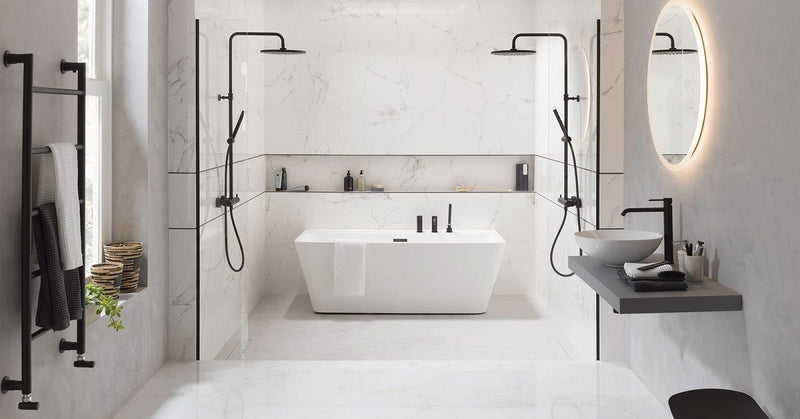
How water-saving toilets reduce waste and save resources
Share
In an era where technological advancements are pivotal in shaping sustainable solutions, the question of how water-saving toilets reduce waste is more relevant than ever. For tech professionals and enthusiasts, the integration of smart technology into everyday utilities offers a promising frontier. These innovative toilets not only conserve water but also significantly reduce environmental impact, addressing both ecological and economic concerns.

The Evolution of Toilet Technology
Traditional toilets have long been notorious for their excessive water usage. A standard toilet can consume up to 7 gallons per flush, leading to a staggering amount of water wastage over time. Enter the era of water-saving toilets, which are designed to use significantly less water without compromising on performance. The development of these toilets is a testament to how technology can be leveraged to enhance efficiency and sustainability in our daily lives.
Modern water-saving toilets employ a range of technologies to minimize water usage. For instance, dual-flush systems allow users to choose between a full or partial flush, thus optimizing water usage based on necessity. Pressure-assist technology is another innovation that uses pressurized air to improve flushing efficiency while using less water. These advancements not only reduce water consumption but also lower utility bills, offering a win-win for consumers and the environment alike.
Impact on Environmental Sustainability
The environmental benefits of water-saving toilets are substantial. By reducing the volume of water flushed away, these toilets help conserve one of our most precious resources. This reduction is particularly crucial in areas facing water scarcity, where every drop counts. Moreover, less water usage translates to reduced energy consumption in water treatment facilities, further minimizing carbon footprints.
Technological innovations in this space also contribute to broader environmental goals. For example, when integrated with smart home systems, water-saving toilets can provide users with real-time data on water consumption, enabling more informed decisions about water use. These insights can foster water-saving habits, making conservation efforts more effective and widespread.
Economic Advantages of Water-Saving Toilets
Beyond environmental considerations, water-saving toilets offer significant economic benefits. For homeowners, the reduced water usage translates to lower utility bills. Over time, these savings can offset the initial investment in upgrading to a water-saving model. Additionally, many regions offer rebates and incentives for installing water-efficient fixtures, further enhancing the economic appeal.
For businesses and large facilities, the financial impact can be even more pronounced. Installing water-saving toilets across a corporate campus or public building can lead to substantial reductions in operational costs. This economic efficiency, paired with the positive environmental impact, makes water-saving toilets an attractive option for tech companies aiming to demonstrate corporate responsibility and sustainability.

Technological Innovations Driving Efficiency
As the demand for sustainable solutions grows, so does the innovation in toilet technology. Companies are continually exploring new materials and designs to enhance the efficiency and performance of water-saving toilets. For example, some models incorporate ceramic disc valves that provide a more reliable and durable flushing mechanism, reducing the need for maintenance and repairs.
Moreover, the integration of IoT technology is revolutionizing how we interact with our bathroom fixtures. Smart toilets equipped with sensors can automatically adjust water usage based on user habits, ensuring optimal efficiency. This intelligent approach not only conserves water but also enhances user convenience and comfort.
Choosing the Right Water-Saving Toilet
For those looking to adopt water-saving toilets, understanding the available options is crucial. Dual-flush toilets, low-flow models, and pressure-assist systems each offer unique advantages. It's important to consider factors such as installation requirements, maintenance needs, and budget constraints when selecting the right model.
For personalized recommendations, consulting with experts or exploring resources such as The Benefits of Water-Efficient Toilets can provide valuable insights. These resources offer guidance on the practical and economic implications of various models, helping consumers make informed decisions.
Conclusion
In conclusion, water-saving toilets represent a significant step forward in the quest for sustainable living. For tech professionals and enthusiasts, these innovative fixtures embody the potential of technology to drive positive environmental change. By embracing water-saving toilets, we can reduce waste, conserve resources, and pave the way for a more sustainable future.
FAQ
Q1: How do water-saving toilets differ from traditional toilets?
A: Water-saving toilets are designed to use significantly less water per flush compared to traditional models. They often incorporate technologies like dual-flush systems and pressure-assist mechanisms to optimize water usage.
Q2: Are there any financial incentives for installing water-saving toilets?
A: Yes, many regions offer rebates and incentives for upgrading to water-efficient fixtures. These incentives can help offset the initial cost of installation and enhance the economic benefits of water-saving toilets.
Q3: Can water-saving toilets be integrated with smart home systems?
A: Absolutely. Many modern water-saving toilets can be connected to smart home systems, providing users with data on water consumption and enabling more efficient water management.
This article contains affiliate links. We may earn a commission at no extra cost to you.
